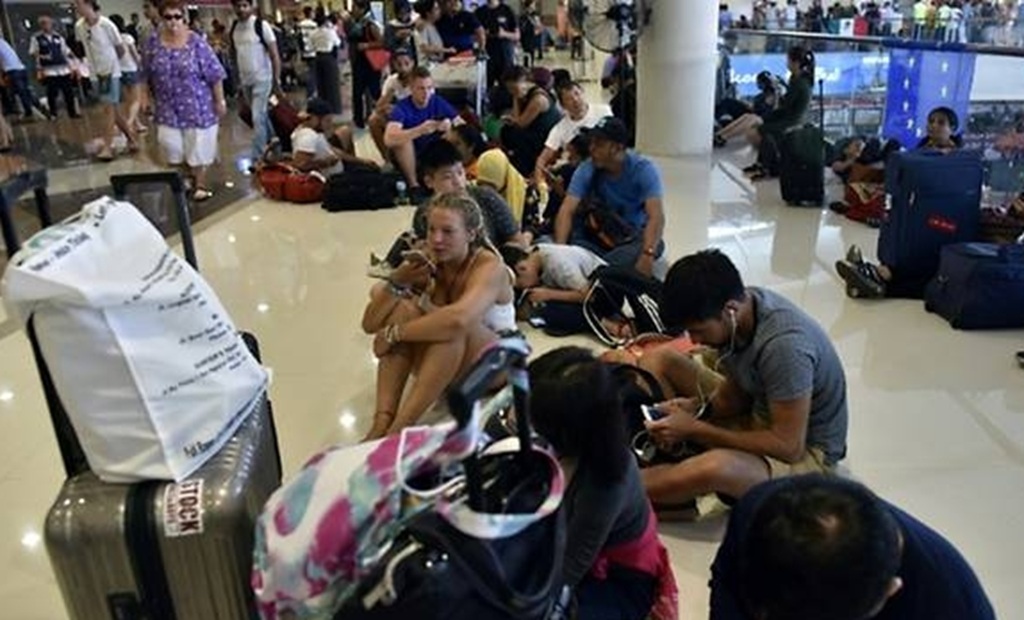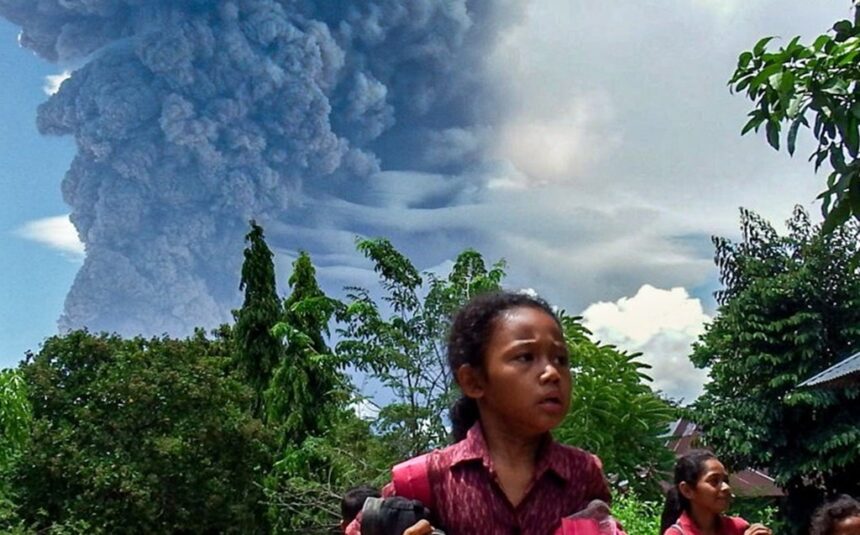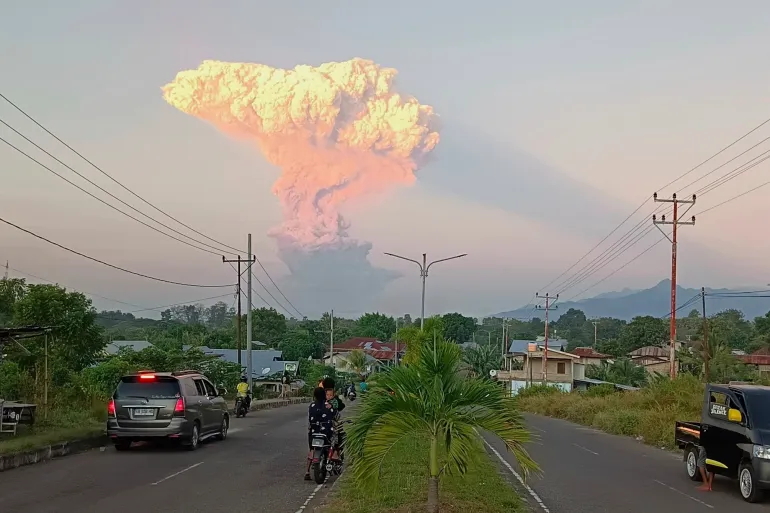JAKARTA – Around two dozen flights to and from Bali’s Ngurah Rai International Airport were cancelled on Wednesday after Mount Lewotobi Laki-Laki erupted with force. The volcano, which stands at 1,703 metres on Flores Island, sits about 500 kilometres east of Bali.
On Tuesday evening, 17 June, the volcano sent a huge ash column 10 kilometres high into the sky. Indonesian officials raised the alert level to the most serious category in their four-step system.
The airport cancellations have left thousands of travellers stranded, including many from Australia and New Zealand, as airlines focus on safety with volcanic ash in the air.
The eruption produced thick grey ash, which could be seen up to 100 miles from the volcano, and forced at least one local village to evacuate, according to Indonesia’s disaster agency. Ash drifted down on several towns, covering homes and farms.
While no injuries or major damage have been reported, officials warned that heavy rain could cause lahar floods made of volcanic mud and debris. Residents and tourists have been told to stay at least 8 kilometres from the crater, extending the previous 7-kilometre exclusion zone, as tremors suggest the volcano is still active.

A customer service agent at Bali’s airport told Al Jazeera, “Ngurah Rai is operating as usual, but some flights are cancelled depending on the route and airline.” Jetstar and Virgin Australia cancelled flights to cities such as Brisbane and Melbourne, while Air India, Air New Zealand, Singapore Airlines, and Juneyao Airlines from China also changed their schedules.
Qantas has not cancelled flights yet but is watching the situation closely. Air New Zealand cancellations left many Kiwis stuck in Bali, with flights like NZ291 from Denpasar to Auckland on hold. Jetstar said, “Safety is our number one priority,” and advised passengers to check flight information online.
Mount Lewotobi Laki-Laki, which means “man” in Indonesian, sits next to its taller, quieter partner, Mount Lewotobi Perempuan (“woman”). These volcanoes are found in East Nusa Tenggara province and are among Indonesia’s 120 active volcanoes along the Pacific “Ring of Fire”, a region known for earthquakes and eruptions.
The latest eruption happened after a sharp increase in volcanic activity, with 50 incidents in just two hours, much higher than the usual eight to ten per day, according to Indonesia’s Geology Agency.
Mount Lewotobi Laki-Laki has disrupted travel and daily life before. In November 2024, a series of eruptions killed nine people, injured dozens, and caused many international flights to Bali to be cancelled. Falling rocks and lava forced thousands to leave their homes.
In March 2024, another eruption sent ash 8 kilometres high, leading to more flight cancellations. The frequent activity of this volcano highlights Indonesia’s risk of volcanic events, with other volcanoes like Mount Merapi in Central Java and Mount Ibu in the Moluccas also under close watch.
Travellers now face delays as airlines review schedules according to ash levels. Air New Zealand stated they are closely observing the situation, a view shared by others in the industry. The Australian government’s Smartraveller site has issued a high caution advisory for Indonesia and advises staying informed. Bali’s tourism sector, a vital part of Indonesia’s economy, could see more setbacks if volcanic activity continues.
For now, Bali’s skies remain uncertain, with both airlines and officials keeping a close eye on developments. Passengers should check directly with their airlines for updates or possible refunds and follow information from Indonesia’s volcanology agency. With Mount Lewotobi Laki-Laki still active, Bali is waiting for conditions to improve.
Sources: Al Jazeera, Guardian















